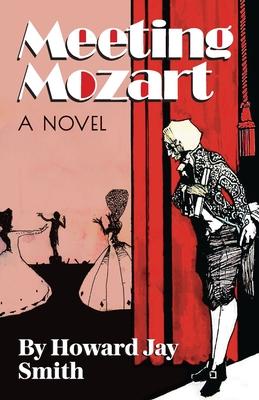Meeting Mozart: A Novel Drawn From the Secret Diaries of Lorenzo Da Ponte is a deftly plotted and richly detailed historical novel that spans generations and involves Mozart, mysteries, masquerades, opera, and spies. It brings to light the incredible life story of Mozart's librettist, Lorenzo Da Ponte, the Jewish-born priest who created The Marriage of Figaro, Don Giovanni, and Cosi Fan Tutte. According to one reviewer, Meeting Mozart is "the musical equivalent of The Da Vinci Code."
The novel opens in the shadows of a war-torn Jewish ghetto in Italy, with the discovery of Lorenzo Da Ponte's secret diaries by his descendent, an opera-loving, Jewish/Italian-American G.I. stationed outside Venice. In the diaries, Da Ponte reveals how he had to live as a Converso in order to survive the anti-Semitism of his era. Over the course of his colorful lifetime, Da Ponte is a gambler, a poet, a womanizer, a murder suspect. He is a friend to Casanova, Mozart's collaborator, an insider at the Hapsburg Court of Vienna, and, eventually, the owner of a deli in New Jersey. An associate of such luminaries as James Fenimore Cooper and Henry Wadsworth Longfellow, he also became the first professor of Italian at Columbia University in New York, as well as the first priest to teach there and, more significantly, the first Jew. Throughout his life, he continued to practice his Jewish faith in secret.
In this multi-generational, historical saga, Da Ponte's struggles parallel those of his descendent, Jake Conegliano, and three generations of the Conegliano family in post-war New York. Like his famous relation, Jake must also hide his Jewishness in order to work for the C.I.A. tracking down escaped Nazis, including those who murdered many of his Italian relatives.
Meeting Mozart: A Novel Drawn From the Secret Diaries of Lorenzo Da Ponte is a follow-up to Smith's award-winning novel, Beethoven in Love; Opus 139. Both books are wonderfully imagined stories set in the world of musical giants. The result are splendid literary novels that incorporate both mystery and historical fiction. Smith takes readers from the stylish streets of Europe's most important musical cities to a Jewish deli in early modern New York. And he reintroduces us to captivating historical figures as varied as Mozart, Casanova, and Clement Moore in a complex and often-riveting tale about creativity, identity, and purpose.
